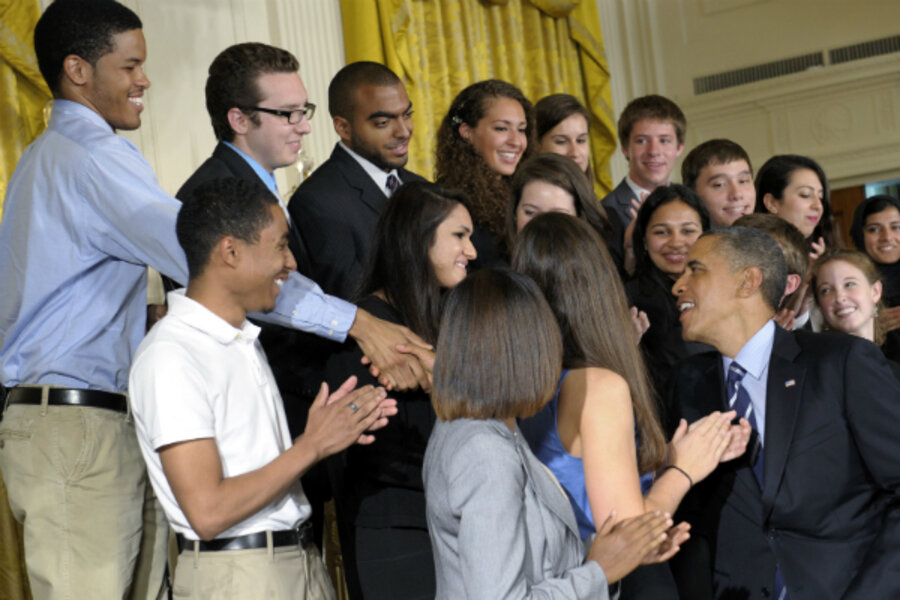Congress poised to prevent doubling of rates on student loans
Loading...
College student borrowers can breathe easier for one more year. Late Wednesday, Congress reached an agreement that is expected to prevent the interest rate on federally subsidized loans from doubling on July 1.
The bipartisan compromise came on the heels of months of political bickering over how to pay for extending the 3.4 percent rate on newly issued subsidized Stafford loans for the coming school year.
President Obama has repeatedly hammered on the loan rate in recent speeches about keeping college affordable for the middle class, saying the extension will save about 7.4 million students an average of $1,000 over the life of the loan.
"Federal student aid is so incredibly complicated, but this is an issue that everybody grasps immediately … 3.4 percent versus 6.8 percent,” says Terry Hartle, senior vice president at the American Council on Education, a higher education advocacy group in Washington.
Dennis Jette, a father with three daughters currently in college, was so passionate that he wrote to his senator in New Hampshire urging her to extend the 3.4 percent rate. “I have a problem with giving banks low interest rates and yet they can’t allow our children to get a decent loan rate,” he says of the stalemate that had persisted until Wednesday. “I’m surprised they’re only going for one year [of extending the rate] … but compromise is good, I guess.”
Mr. Jette’s family is now slated to save about $3,000 as they pay back the coming year’s loans.
The rate extension is packaged with another bipartisan agreement on a federal highway bill; the current one is also set to expire July 1. It is expected to sail through Congress this week because its backers say it will create more than 1 million jobs.
The cost to the government of the student-loan portion of the bill is an estimated $6 billion.
To pay for it, $1.2 billion would come from limiting the amount of time that students can get the subsidized loans – to six years in programs that typically can be finished in four years, and to three years for students in what are typically two-year programs.
The remainder comes from fees on federally insured pensions, as well as changes in how companies calculate the money they must set aside for their pension programs. The changes would make their annual contributions lower and less variable, in effect reducing their tax deductions, Associated Press reports.
It’s not yet clear whether the time limits on the loans would apply to part-time students, since that would be up to regulators working out the details of the law. “We urge Congress to ensure the agreement reached will not hurt veterans returning to school after military service or adults returning on a part-time basis,” says Steve Gunderson, president and CEO of the Association of Private Sector Colleges and Universities, in a written statement.
The $1.2 billion to come from capping the length of subsidies had been eyed by the Obama administration as a way to offset possible shortfalls in funding for Pell Grants for low-income college students.
That tradeoff raised concerns for some advocacy groups. “Keeping loan costs low limits the burden of student debt, while Pell Grants reduce how much students need to borrow in the first place,” said Pauline Abernathy, vice president of The Institute for College Access & Success, in a statement. “If Pell Grants are not fully funded, lower income students will either have to drop out, reduce their course load, get a second or third job, or borrow even more to complete college."








